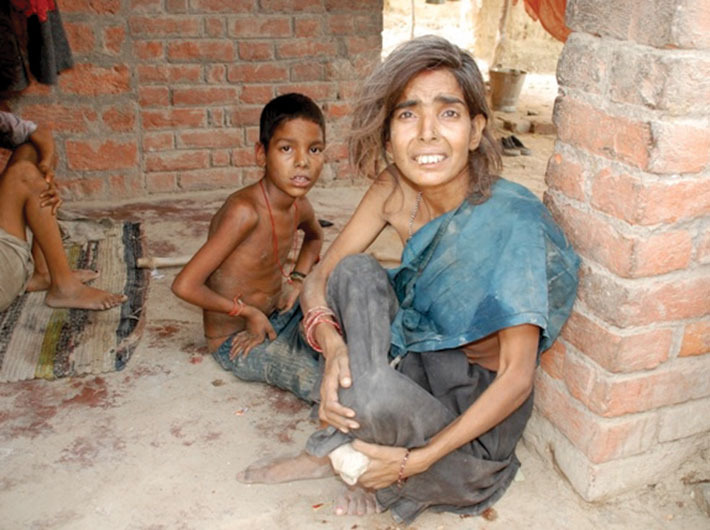It is not noticed enough, but has devastating effects. Preventive action requires robust data to begin with
Lead is a naturally occurring toxic heavy metal, a silent poison threatening the health of millions. Globally, 800 million children have elevated blood lead levels (BLL), with nearly 275 million in India—almost half of the country’s child population1. Lead toxicity remains under-recognized in India, overshadowed by more visible public health challenges like malnutrition, anaemia, and tuberculosis. However, the implications of lead exposure are equally serious that ranges from irreversible cognitive and behavioural disorders and learning difficulties among children and affects workers in informal industries such as recycling and smelting due to poor safety standards. Research evidence from India highlighted that people living near industrial areas are unknowingly and continuously exposed to lead, implying high risk of elevated BLL especially among young children and pregnant women. high2,3. The World Health Organization (WHO) has stated that, “There is no safe level of lead in the blood”4, emphasizing that even low levels can harm children, with blood lead levels above 5 µg/dL considered elevated by WHO and 3.5 µg/dL used as a reference by the CDC to identify higher exposure.
Despite the alarming health consequences and no safe lead level, India faces significant dearth of evidence with regard to prevalence of lead toxicity and implications among population. Vulnerable population (i.e., pregnant women and children) remain particularly understudied. Specific health outcomes such as cognitive deficits, behavioural disorders in children, and adverse pregnancy outcomes have been reported in these populations, but lacks in a standardized methodology in sampling, estimation, and defining lead toxicity threshold. The research evidences on environmental lead sources – soil, water, air, cosmetics, food products etc. – are scarce in India, and often old with no standardized methodology. Critical questions remain unanswered: How much lead is currently in air around industrial zones? What is the contamination level of lead in drinking water supplies? How much more are informal workers in industries like battery recycling, paint industries etc. are prone and exposed with lead contamination? The exposure to lead overall poses a significant economic burden on India. A Lancet study indicated that in 2019, lead exposure cost India approximately $259 billion (nearly 9% of its GDP)5. Yet, in the absence of robust, and up-to-date data, we may underestimate the true scale of the problem.
Necessary lead mitigation intervention demands accurate, reliable, and primary lead exposure data across geographies. This will also help in comparing among various socio-demographic parameters such as within age group, sex, area of living (rural/urban/semi urban), proximity to industries, occupation, income level etc. The estimation of lead across environmental source (i.e., air, water, soil, cosmetic, green leafy vegetables, paints) will help to sharpen the picture about the key source of lead within geographies. Without this granular understanding, policies and intervention risk being misdirected.
There also exists a need for robust state and national surveys pertaining to lead level estimation to inform effective policies and interventions, especially vulnerable population such as young children and pregnant women. The Government of Bhutan conducted a National Lead Exposure Survey (2024) in collaboration with UNICEF and WHO which offers a compelling example for India to consider6. The survey did not only highlight the BLLs in children and pregnant women but also mapped environmental sources of lead exposure, providing a comprehensive view of the issue. For India, a nation far larger in scale but rich in technical and institutional capacity, adapting such a model is both feasible and necessary. Through multi-sectoral coordination, standardized techniques, and a priority among vulnerable groups and high-risk areas, India can take a leadership role in addressing lead toxicity similar to Bhutan.
India cannot afford to ignore the silent threat of lead poisoning, which is harming millions of children and pregnant women and threatening the country’s future. There is an urgent need to act now with initiating pilot studies to assess BLL and identify the potential sources of lead contamination. The CSIR NEERI report provides average BLL across different states, which can serve as a valuable reference to strategically select high risk state for the pilot studies. Leveraging such data will ensure that interventions are evidence based and focused where they are most needed. Additionally, there is a pressing need to invest and streamline national monitoring programmes and surveys, and encourage partnerships between the government, researchers, NGOs, and local civil organizations.
The National Centre for Disease Control (NCDC) has taken a commendable step by integrating lead poisoning surveillance into the Integrated Health Information Platform, making an significant move towards recognizing lead exposure as an important public health concern. Policymakers and public health leaders must treat lead exposure as a key part of India’s environmental and health priorities. By taking strong and focused action, India can protect its people and build a healthier future for the next generation.
References
1. Rees N, Fuller R, Narasimhan G, et al. The Toxic Truth: Children’s Exposure to Lead Pollution a Generation of Future Potential.; 2020. Accessed April 2, 2025. https://www.unicef.org/reports/toxic-truth-childrens-exposure-to-lead-pollution-2020
2. Lu Y, Chandan AK, Mehta S, et al. Assessment of prevalence of elevated blood lead levels and risk factors among children and pregnant women in Bihar, India. Environ Res. 2024;259. doi:10.1016/j.envres.2024.119528
3. Ansari JA, Mahdi AA, Malik PS, Jafar T. Blood lead levels in children living near an informal lead battery recycling workshop in Patna, Bihar. J Health Pollut. Published online March 2020.
4. WHO Guideline for Clinical Management of Exposure to Lead. World Health Organization; 2021.
5. Larsen B, Sánchez-Triana E. Global health burden and cost of lead exposure in children and adults: a health impact and economic modelling analysis. Lancet Planet Health. 2023;7(10):e831-e840. doi:10.1016/S2542-5196(23)00166-3
6. Ministry of Health, Royal Government of Bhutan. National Blood Lead Level Survey 2024. Thimphu, Bhutan: Ministry of Health; 2024. Accessed on August 4, 2025. https://moh.gov.bt/wp-content/uploads/2025/02/National-Blood-Lead-Level-Survey.pdf
Palak Mahajan is Research Associate at Pahle India Foundation. Dr Poulami Sanyal is a Fellow at Pahle India Foundation.


